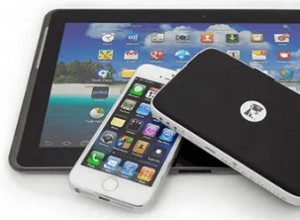في عام 2015 ، التهمت "أسبوع العمل لمدة 4 ساعات لتيم فيريس ووقعت في حب فكرة الدخل السلبي لدرجة أنني أنشأت متجرًا على الإنترنت لأزياء الرجال.
أصبحت المهمة المطروحة - مهمتك أيضًا ، إذا كنت تقرأ هذا الدليل - هي:كيف تبيع؟ قمت بالتدوين وتشغيل الهدايا وجمعت 27000 متابع على Instagram في العام الأول.
لكن كان التسويق عبر البريد الإلكتروني هو الذي أصبح مندوب مبيعاتي النجم. أخبرني الخبراء أن هذه الأداة المألوفة كانت قناة المبيعات الأكثر فاعلية بعد الحديث الشفهي ، وهي صحيحة اليوم كما كانت في ذلك الوقت - حتى في عالم تكون فيه وسائل التواصل الاجتماعي محببة للجميع.
إذا كنت من بين الملايين المزدهر من رواد الأعمال المنفردين بدوام كامل أو المحتالين بدوام جزئي ، فستحتاج إلى توسيع نطاق جهودك المحدودة ، ولا توجد طريقة أفضل (ومجانية تقريبًا) من التسويق عبر البريد الإلكتروني.
ماذا يوجد في دليل التسويق عبر البريد الإلكتروني هذا؟
هذا الدليل مخصص لأصحاب المشاريع المستقلين الذين يرغبون في بيع منتجاتهم أو خدماتهم باستخدام البريد الإلكتروني.
في ذلك ، سوف تتعلم:
- لماذا يعتبر التسويق عبر البريد الإلكتروني أداة التسويق الأكثر إقناعًا لديك ، حيث يتفوق على كل منصة وسائط اجتماعية (نعم ، حتى TikTok و Clubhouse)
- ليس فقط أساسيات كيفية البدء ، بل أساليب لجذب المشتركين وتنمية قائمتك
- كيف تبدو إستراتيجية التسويق عبر البريد الإلكتروني الفعالة ، مع أمثلة من العالم الحقيقي
- كيف تكتب نسخة رائعة ، وتقسيم قائمتك ، وأتمتة رسائلك حتى تربح المال أثناء نومك
يتجاوز هذا الدليل "إرسال الحملات الساعة 11 صباحًا كل ثلاثاء" ويشتمل على إستراتيجيات عملية أثبتت فعاليتها في هذا المجال.
إذا كنت مدربًا أو مدربًا شخصيًا أو فنانًا أو وكيل عقارات أو تأمين أو ممارسًا صحيًا ...
أو كنت تتطلع إلى تنمية أعمال التجارة الإلكترونية أو التحدث أو الصحة أو التسويق الشبكي ...
ثم ضع إشارة مرجعية على هذه الصفحة الآن لأنها الدليل الوحيد الذي ستحتاجه لبناء خط أنابيب من العملاء المتفاعلين والمخلصين مدى الحياة.
لماذا التسويق عبر البريد الإلكتروني؟
دعونا نراجع الإحصائيات:
- "متوسط معدل فتح البريد الإلكتروني هو ما بين 15-25٪ ... وعلى العكس من ذلك ، على Facebook ، يمكنك توقع معدل نقر يصل إلى 0.07٪."
- "متوسط قيمة طلب البريد الإلكتروني أعلى بثلاث مرات على الأقل من متوسط قيمة وسائل التواصل الاجتماعي."
- "مقابل كل دولار أمريكي تنفقه على التسويق عبر البريد الإلكتروني ، يمكنك توقع متوسط عائد يبلغ 42 دولارًا أمريكيًا."
لكن رؤية النتائج بأم عيني كان كل ما احتاجه. وعندما غيّر Facebook خوارزمياته ، مما جعل من المستحيل فعليًا الوصول إلى المتابعين دون دفع ، أكمل هذا تحويلي إلى البريد الإلكتروني (حيث أتحكم في قائمتي الخاصة).
لست خبيرًا في التسويق عبر البريد الإلكتروني ؛ أنا لا أعمل لدى وكالة تسويق أو MailChimp ولم أدرس هذه الأشياء في كلية إدارة الأعمال. لكن لدي أكثر من سبع سنوات من الخبرة المكتسبة بشق الأنفس من الخطوط الأمامية. تأتي المعلومات والإستراتيجيات الواردة في هذه المقالة من إنشاء أربعة أنشطة تجارية منفصلة عبر الإنترنت.
من رائد أعمال إلى آخر يمكنني أن أخبرك:التسويق عبر البريد الإلكتروني هو أقوى طريقة لبناء عملك.
دعونا نتعمق.
جدول المحتويات
- ماذا يوجد في دليل التسويق عبر البريد الإلكتروني هذا؟
- لماذا التسويق عبر البريد الإلكتروني؟
- مبادئ اختيار نظام أساسي للبريد الإلكتروني
- 12 مبدأًا لاختيار خدمة تسويق جديدة عبر البريد الإلكتروني
- كيفية إعداد قائمة المشتركين الخاصة بك
- اختر النموذج الأصلي للعميل
- التقسيم:ليس فقط لللاعبين بعد الآن
- الاشتراك
- مفرد أم مزدوج ، ماذا سيكون؟
- حدثني عن نفسك؟
- 8 أدوات لتطوير قائمتك
- دفع ثمنها؟
- كلمة عن مسارات تحويل العملاء المحتملين
- ممارسة مسارات التحويل
- إرسال البريد الإلكتروني الأول الخاص بك
- إستراتيجية المحتوى الخاصة بك
- كلمة عن القيمة
- سطر الموضوع
- إلى نموذج أم لا إلى نموذج؟
- كيف تكتب نسخة رائعة من البريد الإلكتروني
- كم مرة يجب أن أضرب إرسال؟
- أتمتة كل شيء
- كيف يعمل الأتمتة
- سلسلة الترحيب
- التقسيم والإعادة
- رسائل البريد الإلكتروني الخاصة بالمعاملات
- أخطاء التسويق عبر البريد الإلكتروني التي يجب تجنبها
- هل ستجربها؟
مبادئ اختيار نظام أساسي للبريد الإلكتروني
إذا كنت تفكر في إرسال بريد إلكتروني مجمع ، فستحتاج إلى اختيار خدمة تسويق عبر البريد الإلكتروني. لا ، لا يمكنك إرسال رسائل بريد إلكتروني عشوائية من حسابك في Gmail أو Outlook بدون حظر.
Most email marketing guides begin with a neat little comparison of the myriad providers you could choose:Constant Contact, Aweber, Klaviyo and so on.
Rather than rehash that exercise, let’s lay out some principles that will help you choose a service that suits YOU.
12 Principles for Choosing a New Email Marketing Service
- Is it free? Whether established or starting out, you’re probably on a budget, and so free software is a staple in any solopreneur’s bag of tricks. Most EMS platorms offer a free plan that will handle basic tasks like sending email (you expected a better punchline?)
Pro tip: Ask whether this is free indefinitely or is it a free trial?
- What’s the subscriber cap? That handy free plan is free until you collect a certain number of subscribers. Is that number 250 (Klaviyo), or 2,000 (Mailchimp)? You’ll want to choose a service that gives you runway to grow before paying—especially if you plan to build your list quickly. Also, find out how many emails you’re allowed to send in a month.
- Can I schedule my email campaigns? Maybe as a side-hustler you’re writing marketing copy after the kids are in bed, or before you Zoom into the 9-5 job. Admirable hustle, my friend, but midnight may not be the best time to reach your customers. As simple as it may seem, not all free EMS plans let you schedule your campaigns for later. Watch out for this.
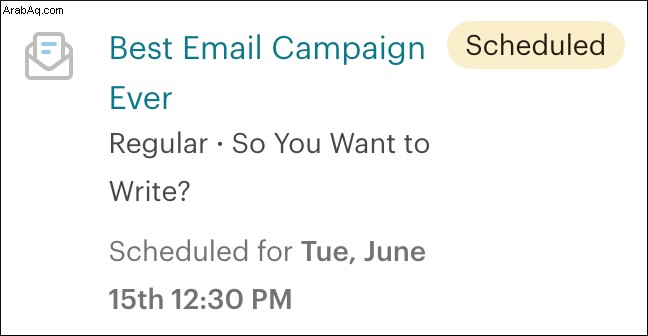
- Does it play well with others? The beauty of pursuing an email marketing strategy is that it works well with many other tools and strategies. Find out whether your EMS integrates with your ecommerce store, landing pages, preferred pop-up service, or your customer relationship management system. The lesser-known EMS might not speak the same language as the rest of your business, which can be a costly headache in the long term.
- Is it automatic? Email marketing is powerful not only because you get to speak directly to customers who have opted-in, but because with automation, you can sell to customers at the appropriate time in their buying journey, even while you sleep. Some guides place automation in the domain of the advanced marketer, but today it ought to be the core of your email marketing strategy.
- Can I segment my list? As a coach, your potential clients might be looking for help with their business, career, relationship, finances or emotions. Don’t market to these groups in the same way. That’s why the ability to “segment” your email list is crucial. Pair this tactic with automation, and you essentially hire half a dozen salespeople—for free. More on automation and segmentation later.
- Do they offer great templates? There are excellent reasons for steering clear of flashy emails in favor of plain text (we’ll talk later). But if you choose the graphics-heavy route, then pre-built templates can save hours and ensure the end product looks great. Ask yourself, do I need a service that offers stunning email templates?
- Am I a Luddite? Awkward question, but do you have a knack for breaking computers? If the thought of tinkering with HTML or poring over analytics data makes you weak in the knees, pick a service with limited features and a dead simple user interface, such as SendFox.
- Does it do landing pages? Growing your subscriber list is a key goal of any strategy, and one way to do that is to offer something valuable (e.g., an ebook) in exchange for an email address. Enter:the landing (or squeeze) page, a basic webpage that encourages a user to make this very trade. Choose an EMS that can also create landing pages easily.
- What about A/B Testing? In practice, this simply means to send an email to two test groups—while changing one variable, like the subject line—in order to choose the more effective email that the rest will receive. True A/B testing is reliable only when you have a minimum sample size—in other words, a list at minimum in the thousands of subscribers. Luckily, Optimizely has a handy calculator to tell you whether your experiments will be meaningful.
- Yeah, but how are their analytics? You can send emails all day and still be shouting into the void. A critical part of any email marketing strategy is to monitor campaign performance and adjust as you go. An EMS with robust analytics is helpful. Some providers make you pay for this. Speaking of which…
- How will this going to cost me? If you’re doing email marketing right, eventually you will outgrow even the most generous free EMS plan. At that point, you either stop growing your business or pay, often handsomely. Understand what features are included in your free plan, and how much you’ll spend for features like automation or those additional 500 subscribers.
Don’t let anyone tell you which service to pick, instead use the principles above to make the best decision for you. Keep in mind:switching EMS is a pain in the rear on the level of cleaning glitter out of a shag rug… so choose wisely.
Here’s a handy comparison of the free plans of some of the most popular email marketing services.
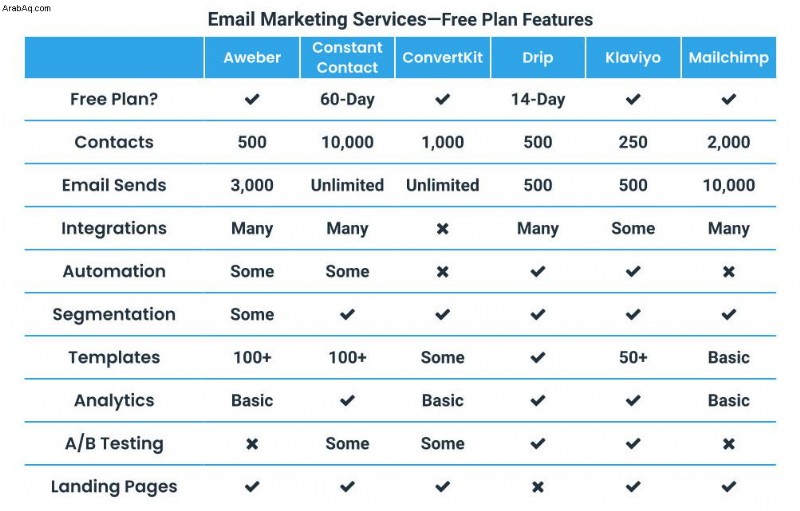
How to Set up Your Subscriber List
How often do you get “Like my page” requests on Facebook? It’s a friend’s boyfriend’s new real estate venture, bitcoin mining, etc… I have 60-plus requests collecting dust in my notifications tab.
Usually they come from estranged contacts who love their pet project so much that they took the painstaking effort to click a button, but not enough to reach out personally.
Yes, I’ve also made the mistake of thinking that, because this is important to me, it will be to my network, too. Wrong.
They are not all your tribe, and this is poor marketing.
When building your email subscriber list, remember those lonely, unanswered Facebook invites. Choose to go deep, instead of wide; curate your audience.
Choose Your Customer Archetype
How do we find our tribe—that group of people who will care deeply about our service or product, and who could become raving fans?
First, you need to know what they look like, and the best way to do that is to create a customer archetype. This is simply an imagined, but hopefully accurate, representation of your ideal client. Ask:
- What is their age, gender, income bracket, profession? (i.e., demographics)
- What do they do on a typical day?
- What challenges are they trying to solve?
- How do they want to feel?
- What beliefs do they have about themselves?
- What is their communication style?
When you’ve answered these questions, give this imaginary avatar a name:Bob Loblaw from Wawa… Leeroy Jenkins from Accounting. Go on, play with it.
Write this on an index card and post it wherever you see it as you start to craft your marketing messages.
Segmentation:Not Just for Jocks Anymore
So you started developing your first customer archetype and found that this person has multiple personality disorder… sounds about right. That’s because it’s unlikely your business will serve only one need or person.
Pop quiz:do you remember your high school cliques? In my cafeteria there were tables for jocks, band kids, drama people, loners and on and on. The lines weren’t as clearly drawn as Hollywood portrays, but there were distinct tribes (or archetypes) who shared interests and needs. The same will hold true for your email list.
This is where segmentation comes in. I run a business that trains writers, but within that bucket there are clients who are writing young adult fiction, non-fiction, fantasy, magazine articles and short stories. If I were to send the same marketing email to all of them, they would unsubscribe in droves.
Most email marketing services allow you to segment your list using tags or groups. In this way, you can tailor your message to ever-more-granular groupings. Segmentation should be set up before you even send that first email blast, but if your email strategy is already underway, it’s never too late to segment. When you do, you’ll more closely match your offerings to your customer’s needs.
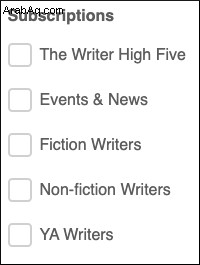
Your standard cafeteria cliques
Opting In
A key rule of any successful email strategy is that your audience opts in of their own accord. Tribe building does not involve importing your personal contacts or scattershot Facebook page “Like” requests.
Opting in is not only the law in most jurisdictions, but it makes good business sense; why waste resources marketing to people who don’t want to hear from you? Instead, let your customers self-select as adoring fans. Ask yourself these questions about opting in:
Single or double, what’ll it be?
Single opt-in means that a client can subscribe with just an email address and one click. It’s fine if you want to let any lost wanderer into the club.
Double opt-in means that when someone enters their email address in your sign-up form, it triggers a confirmation email, inside which they need to click a button to make absolutely sure they want to be on your list.
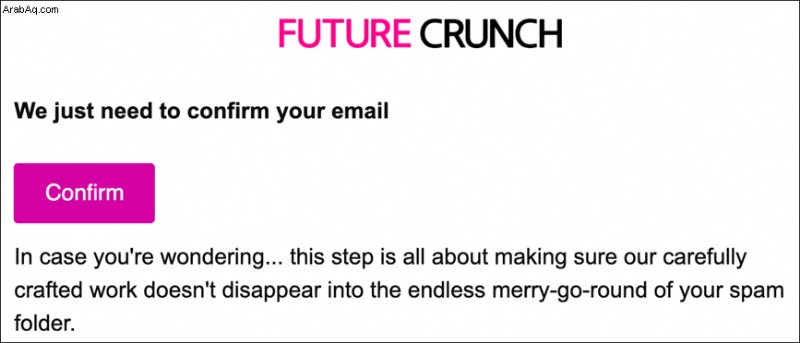
No need to overthink the double opt-in
The latter is a helpful client screening. If a person can’t click a simple “confirm” button, how likely are they to open their wallet? This simple test can reel in more big fish, instead of “old boots and tin cans” to your list.
Tell me about yourself?
How much do you want to know about your customers? In an ideal world you would collect each person’s age, weight, eye color, shoe size, and Zodiac sign. But with every field you add to your email sign-up form, there is a large corresponding audience that will up and leave.
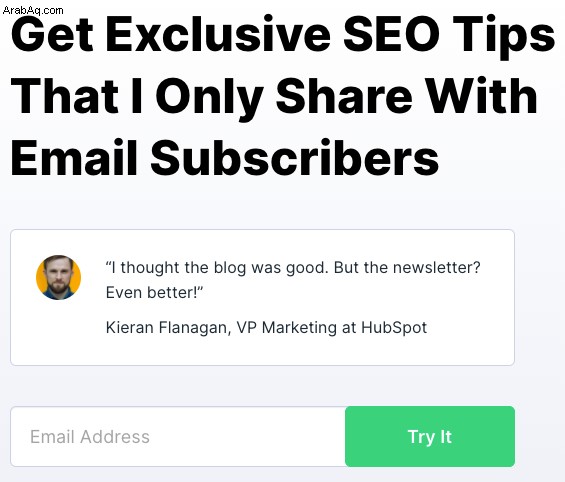
Killer value proposition and social proof, anyone?
To ensure the maximum conversion rate on your sign-up forms, collect only the user’s email address. But, there is an argument for collecting the subscriber’s first name as well, even if the effort of filling in another text box will thwart some people.
The reason is this:most EMS let you insert a small bit of code, called a merge tag, anywhere in your email that displays customized text for each recipient. For example, inserting *|FNAME|* will display “Ricky” or “Johanna”. Yes, exactly like a mail merge in Microsoft Word.
According to the email marketing experts at Optinmonster, personalized emails are opened at a rate six times that of emails that are not personalized. One study showed that personalizing your subject line can lift open rates by up to 20% (but this effect seems to be waning).
It makes perfect sense that your subscribers are more likely to engage with your content if you tailor it to them—even if that’s as simple as addressing them by first name.
8 Tools for Growing Your List
You’ve zeroed in on your ideal customers, segmented them into groups, and started collecting precious email addresses. But how do you actually entice the right people to subscribe, besides that simple “Subscribe” box on your homepage? Clever solopreneurs have these tools in their kit.
- Visible subscribe box: At a minimum, your website visitors should see a subscribe box at the top and bottom of your homepage and every blog post, on your “About” page, and in your navigation menu. Of course to bear fruit, you need healthy website traffic, which rests on a strong foundation of content marketing. And the best content? That’s usually high-quality blog posts (whether you call it a blog or not) that will attract the attention of Google Search.
- The landing page :The sole purpose of this specialized webpage is to get people to take a single action:give us your email address. They typically include your logo, a compelling headline (that is also your value proposition—the reason to sign up), a short list of what you’ll get, maybe some social proof and finally the call to action (CTA):the email signup box itself. What this page should not include is any kind of distracting menu, links to other sites or multiple CTAs. Keep it simple.
- Lead magnets: These are any valuable gifts your prospects will trade in exchange for their closely guarded email address. Think:ebooks, checklists, free trials, proprietary research, image packs, templates, apps, quizzes, webinars or free brownies.
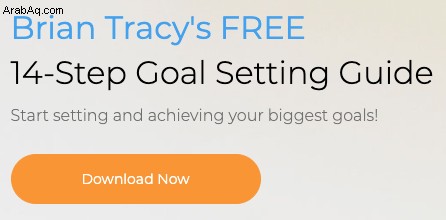
The man, the legend, the free guide
A user normally requests the magnet from a landing page, which is then pushed to their inbox using email automation. Work hard to ensure your “free brownies” are the kind your ideal client can’t resist. Don’t give away a generic Amazon gift card—lest you reel in the professional giveaway enterers instead of your desired customer.
- The content upgrade :This type of lead magnet is hyper-targeted to a specific interest. Let’s say that you are a wellness coach, and you published a blog post about eating right to manage diabetes. On that page, offer a free, downloadable cookbook for diabetes-friendly dishes. This is an upgrade over the content your blog visitor is already interested in. Content upgrades convert better than generic lead magnets. To get started, use Google Analytics to find out which of your pages see the most traffic, then offer content upgrades there (pop-ups, anyone?).
- Surveys :People get the warm and fuzzies when you ask for their opinion. It’s easy to host surveys free through SurveyMonkey, Typeform, or even some EMS platforms. Besides gaining incredible insight about your prospects, you can make the last question on your survey “What’s your email address” and add them to your list (with an opt-in disclaimer, of course), automatically segmented into their proper categories.
- The giveaway: This is a type of contest in which you promise a chance to win a valuable prize(s) in exchange for the entrant’s email address. Before Harry’s launched its men’s shaving brand in 2013, the founders said, “We can’t launch to crickets!” They devised a simple, two-page website that captured email addresses and (like all great giveaways) encouraged virality:the more friends you referred, the better the prizes. This campaign collected 100,000 hot leads in one week. Your mileage will vary, but the quality of your leads will be better if you offer freebies that your ideal clients crave.
- Pop-ups: These are a nuisance reviled by everybody except smart marketers. If you have a website, consider at minimum running an exit-intent pop-up, triggered when a user’s mouse icon moves to close the browser tab. Hey, you’re about to lose this person forever anyway, you might as well make a last Hail Mary attempt to sign-‘em-up.
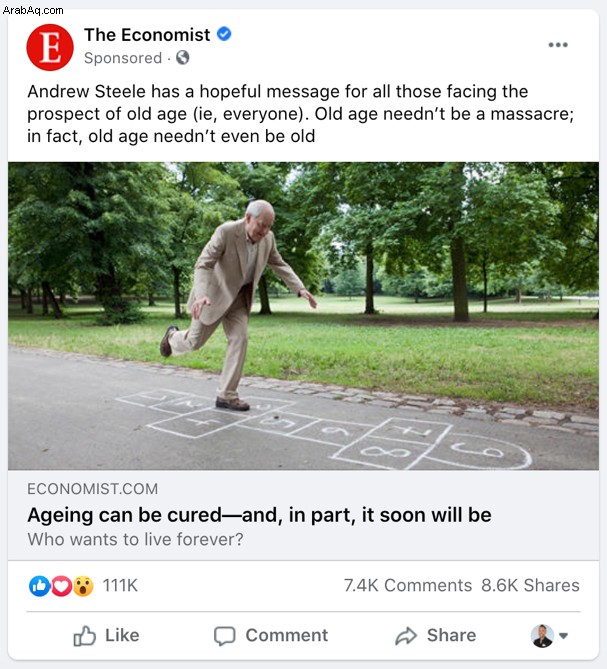
Don’t let the pop-up miss you on the way out.
Pop-ups are also a great way to serve up content upgrades. These can subtly say “hey look at me” when a visitor finishes a blog post, for example. Pop-ups can be customized based on what site the visitor arrived from, where they are on your site and for how long, country, and on and on. It’s a powerful way to grow your email list. Capturing 2-5% of your visitors is typical, but some of my pop-ups convert at 17%. Constantly A/B test your pop-ups to make them better.
- Referral and loyalty rewards programs :What’s more effective than email marketing? Word of mouth. Combine the two and you’ve basically won the internet. The best referral traffic is from zealous, raving fans, but those who aren’t yet can be incentivized to tell their friends through shameless bribery. إنها تعمل.
When PayPal launched, it gave new users $20 cash, plus $20 to refer a friend. This cost a modest $60 million, so I don’t recommend it for you, but you can replace cash with store credit, discount codes or cheap freebies to encourage viral email list growth. This strategy can be especially effective for ecommerce solopreneurs; platforms like Shopify offer hundreds of referral program plugins.
Pay For it?
Paid ads merit this separate section because they are not free. If you don’t have at minimum $5 per day to line the pockets of Google or Facebook, skip ahead. But if you can reinvest 5 or 10% of your coaching fees or real estate commissions into ads, you will supercharge your list growth. Should you advertise a product? على الاغلب لا.
“But Mike, why would I pay if not to generate immediate, positive return on investment?”
Because this strategy works better:
- Run a paid ad that points your ideal customer to a free lead magnet (i.e., a landing page).
- On that landing page you will capture their email address.
- Drip out useful, no-strings-attached content to subscribers over time to build trust (see the section on automation for more).
- Only once they’re warm, sell your thing.
Subscribers captured like this will stay subscribed for years, and you can communicate with them hundreds of times. With an ad for a paid service, you only get to pitch them once.
A Word on Lead Funnels
Remember Business 101 class? Lead funnels are a graphical representation of your clients’ journey to the promised land, aka the ranks of your customers. From top to bottom, it goes like this:
- Awareness :Customers see you for the first time, perhaps through your blog post, an ad or on the side of the Goodyear Blimp.

Just your friendly awareness ad
- Lead capture :At this stage, prospects not only know about you, but have voluntarily asked you to email them. See tools one through eight above about capturing leads.
- Prospecting :Much like in the dating world, just because someone gave you their contact information does not mean they’re ready to buy what you’re selling. You need to go on a few dates before they open their wallet. Essentially, this means carefully placing exceptional content in their inboxes without asking for anything in return.
- Marketing :Oh, hello buzzword. Once you’ve turned prospects into qualified leads you may pass GO and start telling them about the wonderful (paid) opportunities on offer.
- Sales: This goes hand in hand with marketing, but is more hands-on and may include one-to-one contact over the phone. Do this well and leads turn into customers.
As subscribers move through this process, many will drop off at each stage, hence the funnel analogy. But if you apply these concepts well, you’ll enjoy a steady stream of dollars pouring out the bottom, right into your bank account.
Funnels in Practice
If you’re an insurance agent, for example, you may start by writing blog posts about the different types of life insurance (awareness), and offer a content upgrade on that page (lead capture).
Subscribers then receive a series of three emails with free content (prospecting), followed by three emails regaling them with the merits of this particular product you sell (marketing).
Your EMS can tell you who opened all or most of these emails, and you can start contacting these hot leads individually to work your sales magic.
Sending Your First Email
Wow, we’ve spent half the article preparing to start, and you’re still here… congrats! But as Abe Lincoln said, “Give me six hours to chop down a tree and I will spend the first four sharpening the axe.” Your axe is sharp; let’s start swinging.
But, um, what should you put in your emails?
Your Content Strategy
Alright, you’ve tinkered with all of the software’s settings and you’re ready to light the fuse on your first blast. What’s in that email? You have a few familiar options here:
- Shameless, relentless selling :I don’t even know how this option made the list. Avoid it at all costs. The 80/20 rule applies to most facets of life and here is no exception. For every one sales email that goes to your subscriber list, four sales-free emails should come first.
- The generic newsletter: This is an OK-ish place to cut your teeth, but today doesn’t inspire. Some people might want to hear about your company in the media, get product updates or see your deals of the week, but this won’t encourage mass sign-ups or keep anyone on your list for long.
- The branded newsletter :I reached out to SEO training expert Brian Dean at Backlinko, who highly recommends this strategy. It’s a newsletter, but the twist is that its layout, structure and content are consistent each week.
“This [strategy] makes a surprisingly big difference when it comes to open rates. Most solopreneurs position their newsletter as a way for subscribers to hear your thoughts… The issue is that many of these newsletters are all over the place,” Dean says.
Tim Ferriss’ 5-Bullet Friday is an exceptional model that I’ve shamelessly hijacked for my company’s own Writer High Five . Why reinvent the wheel? This works and hasn’t been done to death yet.
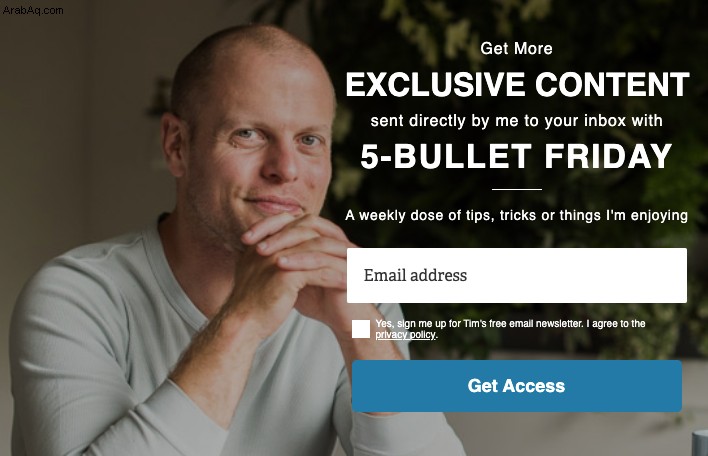
A newsletter that doesn’t bore
- Blog post updates :If you write a blog, you should absolutely be sharing this content with your subscribers regularly. This can be automated so every time you click “publish,” a customized email is sent to your list letting your adoring followers know, and enticing them back to your website.
- The product launch formula: This is one of many variations on the marketing push strategy (think discounts, Spring collections, and Black Friday sales). Self-titled “Internet Millionaire” Jeff Walker wrote a book called Launch that makes a surprising amount of sense. His email marketing formula? Over one or two weeks:
- Send a pre-pre-launch email (like a survey) to build anticipation and take customers’ temperatures.
- Send a series of three pre-launch emails containing exceptional content to cultivate authority, social proof, trust, etc.
- Then hound your list with five to seven sales emails that leverage scarcity and urgency.
It’s forceful, but I’ve had decent results with variations on his theme.
A Word on Value
You know your business best, but regardless of the content strategy you choose, the rule of thumb is this:ABAV . Always Be Adding Value. Value, not money, is the currency upon which the free market runs. Value can be a piece of information or a piece of cake. It’s subjective, which means that what I like is not necessarily what you like.
Here’s a business secret:offer someone more value than they think it’s worth in dollars and they will throw their money at you.
ABAV in email marketing means sending out incredibly valuable emails. The specifics will vary:an entertaining story, useful tips, discount codes or your exercise plan.
As the saying goes, content is king. Send high-quality email content every time and your business will enjoy:
- Exceptional subscriber engagement (open and click rates)
- Trust and authority
- Loyal fans who generate word of mouth referrals
- More sales than you can shake a piece of cake at
The Subject Line
The subject line of your email is arguably the most critical tactic in your email marketing strategy. Combined with the preview snippet—that short line of text that shows up after the subject line in some inboxes—this 100% determines whether your subscriber opens your message.
A boring subject line like “Update” will lead to abysmal open rates, but something spicy like, “I made the biggest mistake today…” will put that number closer to 30, 4 or, even 50 percent. A few key triggers are useful in subject lines:
- Scarcity:“Registration closes at midnight”
- Curiosity (aka the clickbait approach):“You’ll never believe who died”
- Personalization:“Tips for sci-fi writers”
- Emojis:Used in moderation, these can help your note stand out in an inbox
Dean swears by short subject lines:they are less likely to contain words that trigger spam filters, and his research shows they perform well.
There are many subject line testers out there if you want to tinker, including Coshedule (note their own brilliant lead capture strategy).
To Template or Not to Template?
An email template is a pre-built container for sending beautiful updates to your fans. Whether you’re selling kitchenware or skin care, your speaking services or that silent meditation retreat, there’s a template that fits your aesthetic.
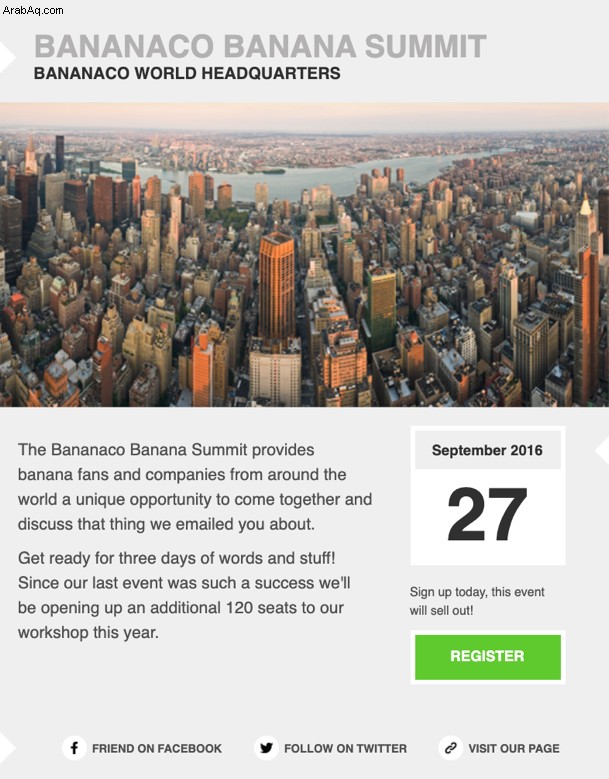
Figure 12.3:standard email template
But should you use them?
That depends on your brand’s personality. If your product is primarily visual—for example, jewelry—then your customers will look forward to an email full of graphics.
However, there’s a compelling case for using emails that look like a regular email from a friend. Flashy emails say “I’m about to sell to you.” Research from ecommerce platform Jilt shows that text-only emails enjoy higher click rates—17 percent higher, in fact. The stats are similarly rosy for generating website visitors and revenue.
Why does simple win? Because we’re all overwhelmed with marketing messages (even those we signed up for) and looking for any easy excuse to delete. Plain emails look more like the ones we get from friends and colleagues so they fly under the radar.
How to Write Great Email Copy
Writing great copy is an art learned over time. If you’re not a wordsmith, here are some tips to get started:
- Write to a friend. The best way to sound like a corporate shill is to write for an audience. It leads to hackneyed phrases like “act now to receive your special gift” or “thank you in advance for your patronage.” Just. Stop. Pretend that you’re writing to your friend (minus the curse words) who also happens to be your ideal customer archetype. Start with “Hi” instead of “Dear Ms. Peabody.” Use contractions and simple language. People have tired of formality, especially in these work-from-home times. Sound human.
- Tell stories. People are hardwired to love a compelling yarn, and an email that starts with one will be hard to ignore. SUCCESS Magazine’s Chief Storytelling Officer, Kindra Hall, has mastered the art of connecting with her audience through stories, turning anecdotes into life lessons wherever she goes. “Storytelling is how you gain influence and, ultimately, achieve your success,” she says. This works because, “when the story is well-told, you build the trust that is essential to success in your career and life…” not to mention, in your email marketing campaigns.
- Keep it short. When you convince subscribers to open your note, you don’t want to lose them with the wall of text. Use short paragraphs of one to three lines. Limit yourself to 300 words if you can, so your CTA shows on-screen without needing to scroll. Cut unnecessary words. Include only one CTA. Get to the point quickly; inbox time is scarcer every day.
- Take the you view. Write while standing in your customer’s shoes. Forget “we need to clear our warehouse, so we’re having a sale.” Forget “I’m taking on new clients.” Think about what your customer wants:“Finally get that book published!” or “Learn the money mindset that will make you debt-free!”
- Sell benefits, not features. Features are the car’s mileage, colors and anti-lock brakes. Benefits are the way this car makes you feel or the problem it solves (an affordable way to get yourself to work). See the difference? If you’re sending a sales email, keep benefits top of mind, not the fine points.
- Use mental triggers. :Ahh, psychology… a domain that all ethical marketers should strive to master. Artfully include these mental triggers in your emails to influence your audience:
- Anticipation :Build a buzz.
- Authority :Position yourself as an expert.
- Community :Let people feel like part of something bigger than themselves.
- Likeability :People do business with people who seem like them.
- Reciprocity :Give first, and people feel obligated to give back.
- Scarcity :Everyone wants what’s hard to obtain.
- Social proof :If everyone else is doing it, it must be good.
- Trust :Nobody will listen to—let alone buy from you—if they don’t believe you have their best interests at heart.
- Urgency :A time crunch is an excellent motivator. Create some healthy FOMO.

Neil Patel doesn’t want you to miss out.
How Often Should I Hit Send?
Frequency depends on your purpose and your audience, but avoid overkill. One survey asked people point-blank why they unsubscribe from email lists. The No.. 1 reason is no surprise:46% said it’s because they get emailed too often from an organization.
At the other extreme, people have notoriously short memories, and if you don’t email often enough, they will forget they subscribed to your list. Long silences are an excellent way to rack up those spam complaints that will quickly make your email address, or entire domain, persona non grata with Gmail or Outlook’s servers.
No matter how often you ping those inboxes, stick to a regular schedule.
Automate Everything
Email is an exceptional way to 10X your marketing efforts. Talking to leads individually may be more convincing, but as a solopreneur, it’s a scheme that doesn’t scale.
However, if you’ve dabbled with email marketing, you already know that even basic email marketing strategies also fail to scale. You can quickly find yourself spending all seven days of your week creating lead magnets, tweaking popups, writing copy and obsessing over analytics—instead of actually doing what you do best:the mindset coaching, Acroyoga workshops or cheese-making.
There is deliverance and its name is automation.
How Automation Works
Picture this:While you’re sleeping, someone from Japan discovers your blog post and, as he’s about to leave, enters his email address in your exit intent popup.
This triggers the email with a link to download your bungee-jumping safety checklist, which he just loves, by the way.
Three days later a second email is delivered with related content—all free, with no strings attached. This process repeats, building authority and trust in your new friend.
Because his download behaviour identified him as your thrill-seeker archetype, this email automation series now begins to deliver him marketing messages about your monthly (paid) bungie retreats.
He’s intrigued and becoming a fan. Once the final urgency email hits his inbox, he completes the sale.
It’s only when you receive the order confirmation that you even know about this customer’s journey. You didn’t have to lift a finger to make the sale—except initially, to set up the email automation.
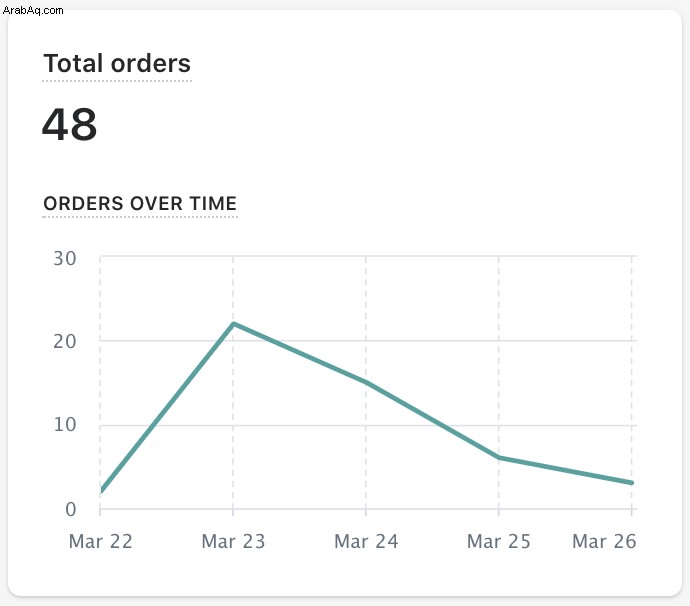
Automation works, even when you don’t
How effective is this, exactly?
Deana Thornton, director of commerce marketing at Mailchimp told me:
“Entrepreneurs and solopreneurs who use marketing automations instead of sending bulk emails can, on average, experience 167 percent higher click-through rates and 95 percent higher open rates. And for our e-commerce solo vendors, automated emails can elicit up to five times more orders—per email—than bulk emails.
Can you see how this tactic might enormously multiply your effectiveness as a solopreneur?
The Welcome Series
The most basic email automation is the welcome (or onboarding) series, and yes, you should use it. This series is often three-to-seven emails long, and it’s usually sent to each subscriber that joins your list. As such, it will be somewhat generic. But that’s OK, especially if your list of customer archetypes is one item long. It might look like this:
- Day 1 :A warm, personal hello from you, which includes some helpful info and specific CTA, such as read this blog post.
- Day 3 :The “Oh yeah, I subscribed to that list” email, which might be another how-to or tips article on the same or a related subject. No sales yet.
- Day 5 :Another actionable, informative piece of content, sans-sales.
- Day 7 :A note that subtly lets your recipient know about the existence of your flagship product, without overtly asking them to engage. A survey or quiz is a great way to prime someone to buy a course or sign up for a free trial, for example.
- Day 9 :Your first true marketing ask. Nothing too forceful, perhaps packaged with more helpful content.
- Day 11 :Pure promotion:A series of three to five emails over the course of 18-ish hours repeatedly asking for the sale, and leaning heavily on the scarcity and urgency element.
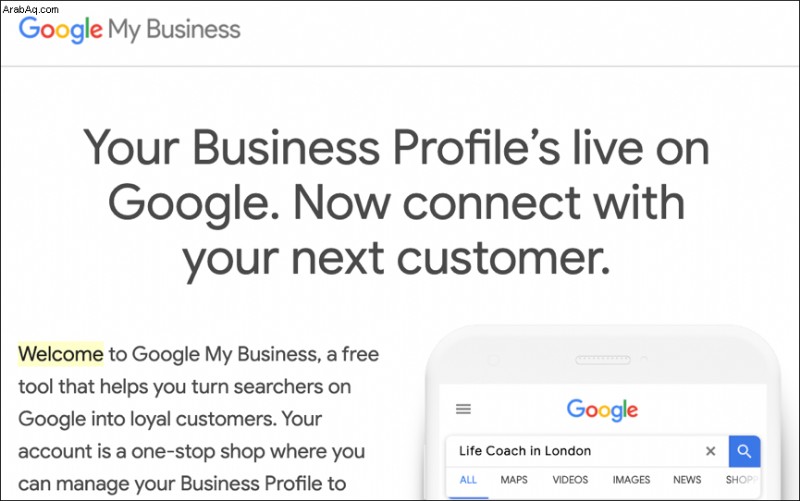
Welcome to Google, in your Gmail inbox. Very meta.
You’ll want to trigger the Day 1 email immediately when someone joins (or, right after they do the double opt-in dance). They will be expecting you. For the remainder, set them up to go out at a time of day when people are opening emails, like right before or after lunch.
Segmentation, Redux
Advanced email marketers will go beyond the generic welcome series into automations that are painstakingly handcrafted for each of your segments (customer archetypes).
It’s easy to tag subscribers by interest at the time of signup by offering a lead magnet with niche appeal:one for first-time homebuyers, one for downsizers, one for those looking for commercial real estate.
It’s simple—but requires a great deal of care—to set up separate automations (aka lead funnels) for each segment.
You can also segment your list not just by their interests, but by where they are in their journey:new subscribers, one-time buyers, repeat customers, your raving fans, those who are disengaged and those who started the checkout process but got distracted by cake.
You might be asking yourself, why bother getting this crazy-granular? According to Mailchimp, segmented email campaigns enjoy on average:
- 14.31% higher open rates
- 100.95% more clicks
- 9.37% fewer unsubscribes
Which segments should you prioritize? If you have a website, then with help from your friend Google Analytics, find out which pages (e.g., a blog post) see the most visitors, and deduce visitors’ interests.
Transactional Emails
Transactional emails are the bookkeeping-level-unsexy emails that include order confirmations, shipping notifications, event reminders and the like.
Often, they are rarely unchanged from their default templates.
But they represent another unusual and untapped opportunity to wow your clients and upsell. The textbook example is CD Baby’s shipping confirmation, which started like this:
“Your CD has been gently taken from our CD Baby shelves with sterilized contamination-free gloves and placed onto a satin pillow. A team of 50 employees inspected your CD and polished it to make sure it was in the best possible condition before mailing. Our packing specialist from Japan lit a candle and a hush fell over the crowd as he put your CD into the finest gold-lined box that money can buy.”
You get the idea. That email tickled customers, who turned the company into a $200 million player. Don’t let your transactional emails fall flat.
Email Marketing Mistakes to Avoid
You’re on a roll, solopreneur. Your automated email robots are toiling away in the background, you’re sending special marketing campaigns and have even settled into the perfect monthly newsletter groove. A steady stream of new subscribers walk through your virtual front door each week.
Careful, it’s not time to celebrate. Your fine words may be landing in inboxes across the globe, but this doesn’t guarantee anyone is listening or buying. Do not mistake activity for achievement. Avoid these common email marketing mistakes and your campaigns will start to deliver steak, not just sizzle.
- Avoid the spam/social/promotions folders. Gmail (for example) knows that you’re buried in email and tries to help. It’s great at putting spam in a corner but often gets it wrong. You’ll find the occasional legitimate email there.
Even more common is for subscription-type emails to be punted to the dreaded social or promotions tab, which nobody opens.

Gmail’s tabs:stay primary—you’re worth it
Your emails can avoid this purgatory but steering clear of pseudo-spammy words and phrases (especially in the subject line) like:buy now, discount, free, offer or prize. You can’t guarantee a spotless record, but you can improve your chances by speaking like a human, not an infomercial guy from the ’80s.
Dean swears by short subject lines to reduce your chances of unwittingly including a word deemed spammy. His are often two words long, and he boasts exceptional open rates.
- Do not obliterate inboxes . You might be in love with graphics-heavy emails, and that’s OK, as long as you keep the file sizes of your images small. Emails with mammoth images are often blocked by email providers, and you’ll never know your message was lost at sea.
More than this, several major email services don’t show graphics by default (another argument for text-only emails). If you insist on graphics, make a request in each email for subscribers to add you to their address book so those images will load.
- Make sure it works on mobile . If you had a dollar for each out-of-date website that made you pinch and zoom just to read the text, you’d have a lot of dollars. The same problem can threaten your emails. Major EMS’s have already optimized for mobile, but it’s still good practice to send a test email to your phone just to be sure. Is your font at least 16 point? Are those buttons big enough? Are your links spaced out enough?
- Do not neglect analytics. Data is beautiful—and profitable. It built the modern Silicon Valley. These are some key performance indicators (KPIs) you should track as part of any email marketing strategy:
- Open rates :It depends on your industry, but 25% is a respectable target. Your open rate is entirely determined by your subject lines and pre-header copy.
- Click rates :It might seem discouraging, but 2 or 3% is average. But you’re not average. Think you can get it up to 5%? Don’t forget to track the click rates for your website pop-ups, as well. These are growing your list, after all.
- Unsubscribe rates :25% of your list will drop off each time you send a note; it’s unavoidable. But if those rates are higher, your followers are telling you something.
- Sales :Yes, you can integrate your email campaign reports with many ecommerce platforms.

Just a regular Tuesday
Tracking is half of victory, but then do something about it. Rewrite emails in automation series that fall flat. Hypothesize about improvements for each campaign sent and always be pushing your KPIs.
- Failing to practice good hygiene :Sometimes I wake up in a cold sweat after a nightmare about inboxes clogged with thousands of unopened emails. Like the practice of ghosting, people who don’t click “unsubscribe” boggle the mind. There are many who will let your emails flood their inbox for years without opening them.
This is a threat to you as open rates inevitably drop. You need to scrub these people from your list regularly to keep your list clean. Identify those subscribers who haven’t opened any of your emails in the past three or four months, and send them a simple re-engagement email:“Do you still want to hear from us?”
If they click “confirm,” they get to stay on the island. If not, buh-bye. This is crucia, because if your open rates drop too low, email service providers will flag you as an unwanted messenger.
Will You Try It?
I interviewed a handful of business owners for this article, expecting that at least a few would be leveraging email marketing, but 100% were not.
Comments ranged from “I tried it a long time ago but didn’t invest time in it” to “I hate getting marketing emails, so why would I do it to anyone else?”
Most solopreneurs will jump on social media several times per day to chase a few more followers, but don’t put in the modest one or two hours per week required to do email marketing well.
What a huge missed opportunity. In my case, email marketing brings in a full 26% of my orders, but probably closer to 90% by dollar value. Organic search is a distant second. And social media? Only 8% of orders, despite paying someone for three years to run my social accounts.
The research shows that my anecdotal evidence is not unusual.
The question now is, will you leverage this tool and apply what you learned in this guide?
Photo by Vadym Pastukh/Shutterstock




